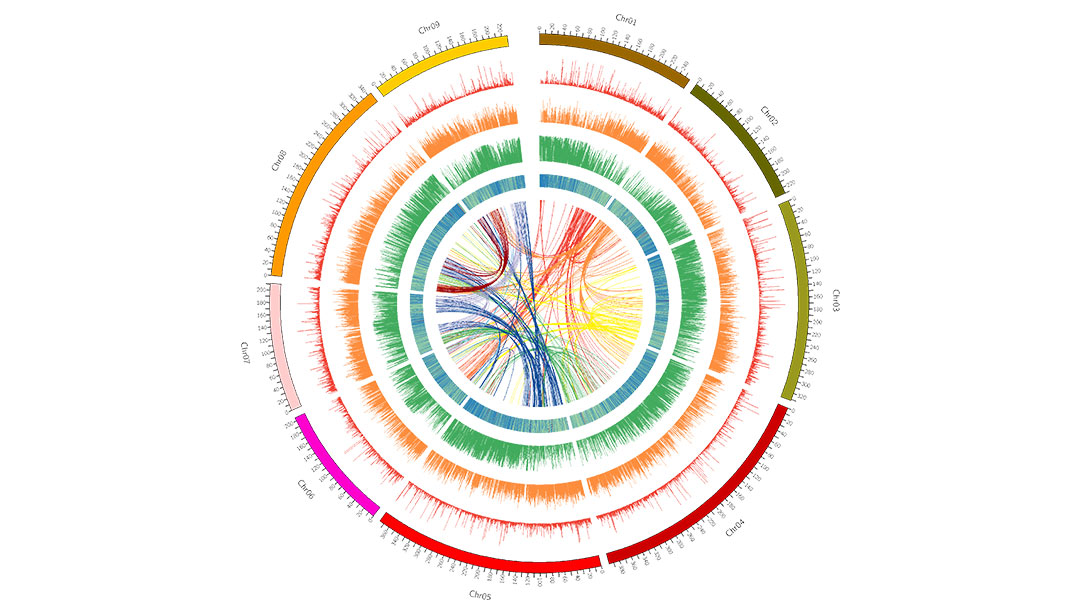The first lettuce genome was released in 2017 (Reyes-Chin-Wo et al., 2017), and the cultivar, namely Salinas, was selected as the sequenced variety. As described in Reyes-Chin-Wo’s work, the genome reference was generated using whole-genome shotgun Illumina reads plus in vitro proximity ligation data to create large superscaffolds, and it was validated genetically and superscaffolds were oriented in genetic bins ordered along nine chromosomal pseudomolecules. The total length of the assembly, with the respective N50s of contigs 12 kb, is 2.38 Gb, covering 88% of the estimated genome size. 38,919 high confidence gene models were annotated while some genomic features that may have contributed to the success of the Asteraceae were discovered.

Stem lettuce or Celture (Lactuca sativa var. augustana), mainly grown in East Asia, is a cultivar of lettuce grown primarily for its thick stem or its leaves. A Chinese local stem lettuce cultivar, namely ‘Yanling1’ (YL1), was selected to generate a de novo assembly. To produce a high-quality stem lettuce genome reference, a combination method of short (Illumina) and long reads (PacBio) sequencing and scaffolding based on optical maps (BioNano) and chromosome conformation capture (HiC) were employed. The N50 sizes of the contigs, scaffolds with optical mapping, and scaffolds further analyzed with Hi-C, were 4.95 Mb, 186.5 Mb, and 332.3 Mb, respectively. The final assembled genome is 2,589.7 Mb including nine pseudo-chromosomes.

Data Source: LettuceGDB; Version: v1.1c
Total length of genome assembly (bp): 2,589,759,771
Total no. of Contigs: 1,959; Anchor rate (%): 99.71; Contig N50: 4,950,584
Scaffold N50 (BioNano): 186,521,119; Scaffold N50 (HiC): 332,303,623**
No. of Superscaffolds (BioNano): 24; No. of Superscaffolds (HiC): 9**
Complete BUSCO (%): 95.42; LTR Assembly Index: 18.13
No. of non-coding RNAs: 5,453; No. of protein-coding genes: 40,341
Data Source: NCBI Genome; Genome Data Viewer
latest assembly version: GCF_002870075.3_Lsat_Salinas_v8
Assembly name: Lsat_Salinas_v8; Cultivar: Salinas
Submitter: Lettuce Genome Sequencing Consortium
Assembly type: haploid; Assembly level: Chromosome
Assembly method: SOAPdenovo v. 2; Hi-Rise v. 1; Genome coverage: 72.0x
Sequencing technology: Illumina HiSeq
Cite: Reyes-Chin-Wo, et al. (2017). Nat. Commun. 8(1). https://doi.org/10.1038/ncomms14953
Wild lettuce (Lactuca serriola L.) also called prickly lettuce, is an annual plant in the Lactuca Genus within the Asteraceae family. It can be eaten as a salad, although it has something of a bitter taste, and is commonly considered a weed of roadsides. Current research indicates that it is the closest wild relative of cultivated lettuce (Wei et al., 2021).
LettuceGDB team is working on assembling genome of prickly lettuce. We prior to release a preliminary version of genome (v0.1). Please note that it is not the final version.
Looseleaf lettuce also known as cutting or bunching lettuce, has many varieties and is widely planted all over the world. These varieties grow away from the main base stem in a loose way, as opposed to a tightly balled head, and they tend to have wrinkled leaves. It is used mainly for salads because they are easy to slice. They grow quickly and can be harvested in about 35 days after transplanting. There are many different types of looseleaf lettuce which can’t be grouped into classic lettuce categories.
Roman lettuce was widely plant in South and East Europe, including in Rome region for many years, which is the potential reason for its name. The outer leaves of Romaine lettuce are usually dark green, and have a distinctive rib that reaches down to the tip. The inner leaves are pale green or green-yellow. It is sometimes called Cos lettuce -- named after the Greek island of Kos off the coast of Turkey, where it is believed to have originated. The Romaine variety is very popular in the United States, southern Europe and Mediterranean countries.
Butterhead lettuce is a type of leafy lettuce, in general with buttery and overlapping leaves that usually range from pale green to pale yellow-green. They are tasted sweet and succulent with tongue-shaped leaves. Butter lettuce works well with gentle, vinaigrette based dressings. It was thought first cultivated in West Europe (Wei et al., 2021) and is now found worldwide. Popular varieties include Bibb and Boston which traditionally in the UK as “round lettuce”, and they are easier to grow than crisphead lettuce.